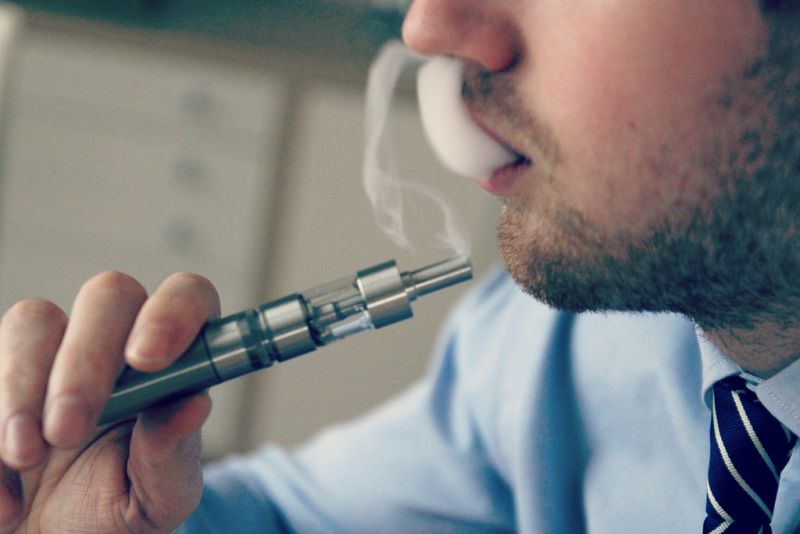New York: Vaping, or smoking battery powered devices known as e-cigarettes has now become an epidemic among US highschoolers a sharp increase in vaping by students has grabbed the attention of the US Food and Drug Administration.
According to a CNN report, the US surgeon general report cited a 900% increase in e-cigarette use by high school students from 2011 to 2015, and the 2016 National Youth Tobacco Survey noted that 1.7 million high school students said they had used e-cigarettes in the previous 30 days. For middle school students, the number was 500,000.
The report by the US National Academies of Sciences, Engineering, and Medicine is based on more than 800 peer-reviewed scientific studies on the health effects of electronic cigarettes. It was compiled at the request of the US Congress, amid a growing international debate over whether e-cigarettes are safe or harmful.
Vaping may raise cancer risk
Vaping may raise the risk of cancer because it leads to DNA damage, even though it contains fewer carcinogens than tobacco smoke, a US study has found. The report in the Proceedings of the National Academy of Sciences did not compare the cancer-causing potential of traditional cigarettes to e-cigarettes.
However, in studies on lab mice, those exposed to e-cigarette smoke “had higher levels of DNA damage in the heart, lungs, and bladder, compared with control mice exposed to filtered air”, it said. Similar effects were seen when human lung and bladder cells were exposed to nicotine and nicotine-derived nitrosamine ketone (NNK), a carcinogenic nicotine derivative.
These exposed cells ere more likely to mutate and become cancerous than control cells. “Thus, although e-cigarette smoke has fewer carcinogens than tobacco smoke, E-cigarette smokers might have a higher risk than non-smokers of developing lung and bladder cancers and heart diseases,” said the study, led by Dr Moon-shong Tang of the Institute of Environmental Medicine at New York University.
According to outside experts, much more work is needed to uncover the true risk of vaping, which is widely seen as a safer alternative than traditional cigarettes. Dr Ed Stephens, senior Research Fellow at the University of St Andrews, called the report a “valuable contribution” to the field of research.
“Unfortunately, no direct comparisons were made with tobacco smoke; instead the authors cite another study that found a key biomarker related to such genetic damage to be present in very much smaller quantities (97 per cent less) in the urine of vapers compared with smokers,” he added. “That study and this new research are both consistent with the widely-held view that vaping is not without risk of cancer and other diseases, but that risk is usually considerably lower than smoking.”
Dr Peter Hajek, director of the Tobacco Dependence Research Unit at Queen Mary University of London, said the study methods are of “unclear relevance for effects of vaping”. “Human cells were submerged in nicotine and in off-the-shelf bought carcinogenic nitrosamines. It is not surprising of course that this damaged the cells, but this has no relationship to any effects of e-cigarettes on people who use them,” he said.
“No comparison with conventional cigarettes was made, but in the text of the article, the authors acknowledge the key bit of information that is of crucial relevance in this story: Vapers show a reduction in these chemicals of 97 per cent compared to smokers. They should have added that his may well be the level that non-smokers obtain from their environment.”
A comprehensive review of the scientific literature, released earlier this month by the US National Academies of Science, found that vaping is likely less harmful than cigarettes, but may lead to addiction in young people. However, it cautioned that the true health effects of the habit remain unclear, since the trend is relatively new.
About 18 million American use e-cigarettes, which are battery-powered devices that heat a nicotine-containing liquid.
Siasat Web Team

